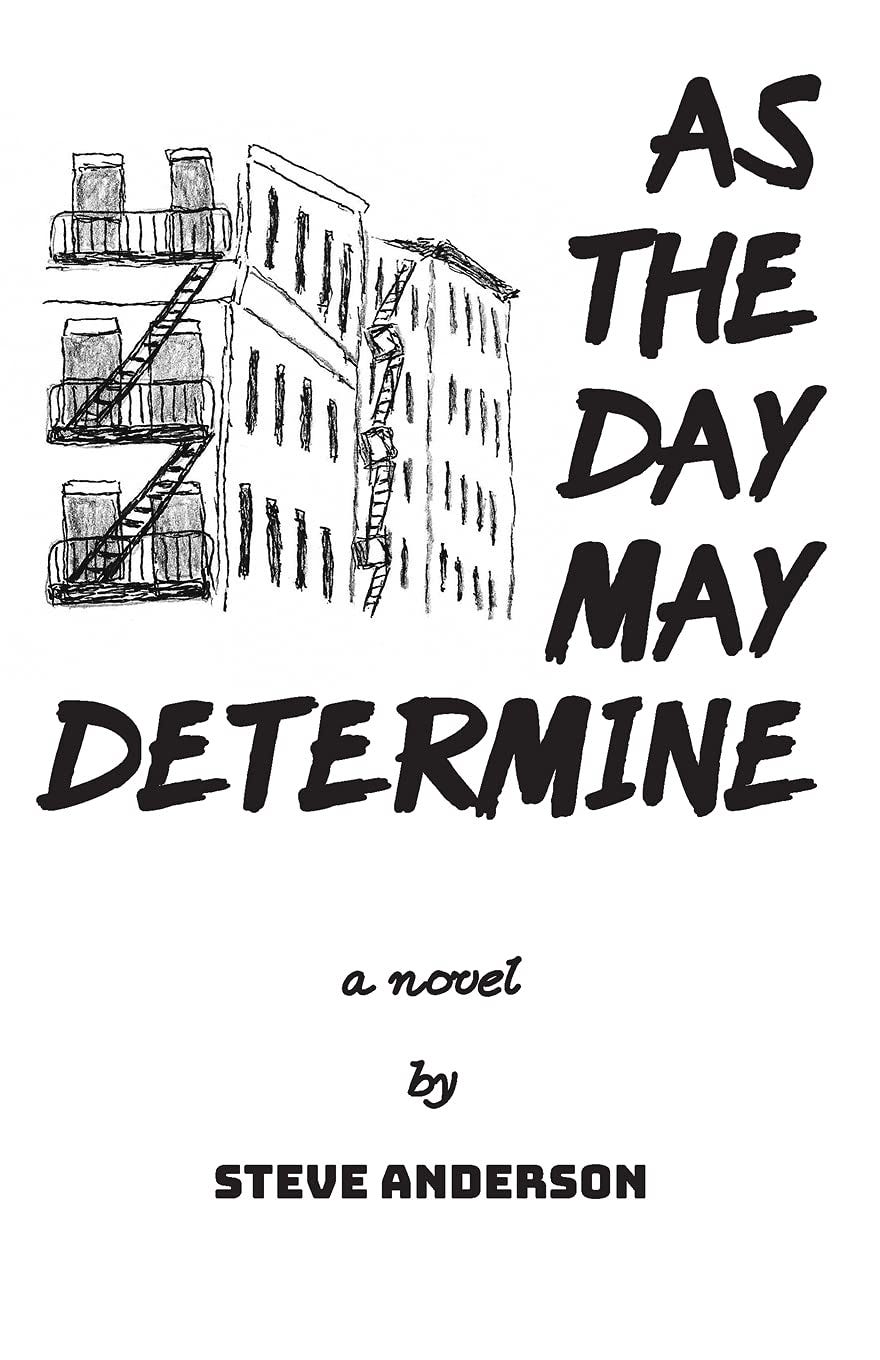Paging Steve Anderson
Steve Anderson, "As the Day May Determine" (2021, 280 pp.)
A year ago I got a self-published novel in the mail: As the Day May Determine, by an author named Steve Anderson. A glance at the three-line bio confirmed that this Steve Anderson was the same one I’d met when I was still Village Voice music editor circa 1983. He wrote me a disparaging letter about a piece I’d published that was so well-put I responded by inviting him to write for us himself, which he did, strikingly enough that he kept at it well after the music section moved on to other editors in 1985. I don’t remember many details 40 years later, and Steve Anderson is not an easy name to Google. But I do recall a few, not least because he and I would chat when Steve did some filing for me once a week, as he also did for Susan Sontag, who given how tenuous that connection was gracious enough to advise me when a friend developed cancer. Anderson lived in the same St. Marks Place building as a college friend of mine in the mid ‘60s, and before too long he started teaching English at Seward Park High School, eventually from near Woodstock, where he relocated with his wife and their son Lucas, who’s one of two dedicatees of this novel, the other of whom is a shrink.
So I started reading and found the going painless at the very least, a peculiarly apt term for a book starring a dominatrix with an art degree who lives in a walkup a few blocks from my own larger turn-of-the-century apartment building—a walkup not unlike the two east-of-B tenements where I paid rent for the decade preceding my move west. Steve had always expressed an interest in kink, and I found his descriptions of Myra’s varied interactions with her well-heeled male clientele convincing and reasonable. She doesn’t enjoy inflicting pain, but recognizes that for her clients said pain is a gateway to otherwise unavailable pleasures and they’re happy to pay her to tend that gateway, which requires more skill and acting ability than they want to know about. She feels for most of these men, who could clearly do a lot worse.
But there was something else I liked about Steve’s novel—its depiction of the East Village where I’ve spent my adult life. As rents have risen faster than my age, the East Village is no longer the dirt-cheap neighborhood it was when I settled there in 1974, and in two relatively recent novels I didn’t like as much as I was supposed to—Jennifer Egan’s Pulitzer-winning 2010 A Visit From the Goon Squad and Ling Ma’s dystopic 2018 pandemic fantasy Severance—I found myself annoyed by how it was depicted. Admittedly, my annoyance was mostly generational. Even east of B my nabe isn’t nearly as low-rent as it used to be, and the artsy students and young professionals who’ve moved in are bohemian by provisional association if at all. Myra and her friends are similar but much poorer, and her neighbors tend poorer still. The best account of this East Village I’ve come across is the penultimate chapter of Lucy Sante’s Maybe the People Would Be the Times, but Sante does have her dark side. My experiences east of B were tamer, and Myra’s building is a kinder, more sociable place than I ever lucked into. Casual friendships endure; the young help the elderly; acquaintances offer each other solace and company when needed.
Moreover, it has a real and in its chosen terms plausible plot involving not just lives in flux but betrayal, miscarriages of justice, even something resembling murder. Glancing through, I found myself rereading longish sections simply because I wanted to be reminded of what happened next. But that wasn’t why I wrote this. I wrote it because I get my own set-off mention in the acknowledgments: “Special thanks to Robert Christgau.” Out of touch with Steve for years, I was deeply flattered, so I set about trying to respond. But the mailing address I had failed, as did the phone number and the email address, and of course Google failed too—there are a lot of Steve Andersons. Nor did Steve seem to be at Seward Park anymore, and when I wrote Gatekeeper Press, which helped him self-publish, there was no response. Only a year later did it occur to me that I had my name on a Substack that was probably read by someone he knew if not himself. So the graf that follows is directed to Mr. unGooglable.
Steve, sorry to report that the 212 phone number I had my name on for over half a century is kaput. I miss it. But my old street address and believe it or not email address are both up and running. Good work. It would be nice to hear from you.

